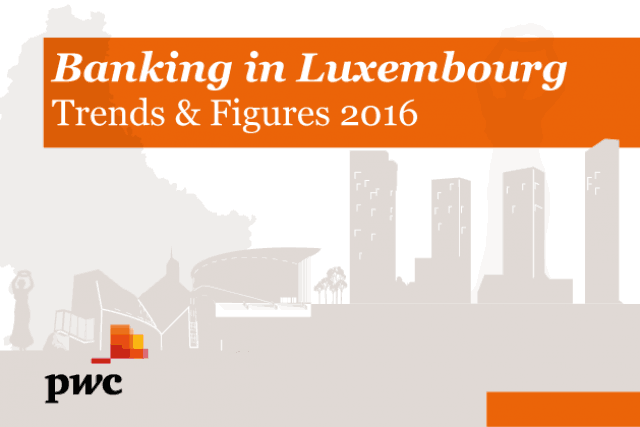Successful stories always come with efforts and Luxembourg has started writing the main chapters of its success several years ago. The cornerstone, which triggered Luxembourg’s banking sector growth, dates back in the 1960s-1970s, when American and German banks established international syndicated loans and Eurobond market activities in the country. In the 1980s, Luxembourg-based banks began offering cash flow services to corporate clients, as well as wealth management services to private clients, pushing forward the level of specialisation of market players. Furthermore, with the implementation of the Ucits Directive into local law in 1988, the investment fund industry emerged in the Grand Duchy and propelled the Luxembourg Fund Centre to the second place worldwide. Also, in the 1990s, the Second EU Banking Directive introduced a single banking licence valid throughout the EU, prompting non-EU banks to establish branches in Luxembourg.
A very diversified and international banking ecosystem
The result is that Luxembourg features today a diversified and international-oriented ecosystem with 143 entities authorised in 2015, according to the PwC Banking in Luxembourg: Trends and Figures 2016 report. More specifically, of the 143 entities authorised, 139 have a universal banking licence while four have a mortgage-bond banking licence. When it comes to legal status, there are 102 banks under Luxembourg law, 30 branches of banks from an EU Member State or a country considered on equal terms, and 11 branches of banks from a non-EU member state.
In terms of geographical representation, Luxembourg is also well diversified with six main country segments grouping German, French, Swiss, UK/US, Luxembourgish and Chinese banking institutions. In the study sample, German banks make up 18.3%, French banks count for 10.6% and Swiss banks for 7.7%. In addition, Italian and Chinese banks represent 7.1% of the sample, while UK and Swedish banks make up 4.9%.

These financial entities are primarily active in the fields of depositary banking, investment-fund servicing and private, retail and corporate banking, making Luxembourg a diversified environment in terms of banking services.
More specifically, the French and German banks are characterised by their universal banking model in their respective home countries. In Luxembourg, they have a highly diversified business model, which includes private banking and asset servicing, but above all the lending business and mortgage bonds. The group of Swiss banks in Luxembourg also has a major focus on asset servicing, as well as a tradition of private banking. In this context, the EU passport for the cross-border distribution of financial services is strategic in making Luxembourg a location of choice for all non-EU banks.
While the Luxembourg banks exhibit a relatively diversified business model in their home market, with various focal points in private, retail and corporate banking as well as asset servicing, other country segments are strongly focused on one or two business areas. Finally, Chinese banks are emerging on an untapped yet segment - i.e. commercial activities, showing the overall highest growth per bank. They now already count ten institutions, active primarily in corporate banking (trade and project financing and syndicated loans) and aim at expanding a European hub function for their corporate banking activities.

Not just diversified, also profitable
Although the number of banks has decreased by one compared to 2014, the total of the balance sheet increased by EUR 6bn (+ 0.8%) to EUR 743.2bn in 2015. The increase was caused by loans and advances to customers, growing by 11.5% due to the rise of loans granted to private and corporate customers (up 10.6% and 15.8% respectively). This led to loans and advances to customers becoming an increasingly important source of income for banks in the financial centre. Moreover, with regards to net interest, it stood at EUR 4.2bn in 2015, an increase of 5.2% due to both the limited number of banks and a slight growth in assets.
Net commission income has also increased consistently over the last four years. At EUR 4.3bn (+5.8%), it is at a historic high. The growth in net commission income is characterised by positive year-on-year stock-market developments despite increased volatility, and by the increased demand for financial products in the field of asset management.

Luxembourg’s banking system’s diversity is key for the financial centre’s competitiveness, and with inspiration from all sides, allowing the individual institutions’ business models to develop successfully into the future. However, some challenges are still around the corner, particularly with regards to regulations. As a matter of fact, the regulatory pressure will continue to be felt strongly and linked costs, which have grown over the past years and a decrease is not yet foreseeable, will compress margins. In response, business models of banks will have to adapt accordingly taking into account the rules coming from the Banking Union based on the Single Rulebook with a Single Supervisory Mechanism (SSM), the Single Resolution Mechanism (SRM) and the proposed European Deposit Insurance Scheme (EDIS), which will continue to transform the euro banking area.
In addition, the uncertainty coming from the Brexit referendum and its impact on the EU passporting, will represent a major issue for banks and investment companies, as Olivier Carré, partner & banking, regulatory advisory and MiFID II leader, explains in a recent PwC podcast.
Finally, more and more customers operate their consumption of financial services and business transactions over mobile Internet. So, the embracement of digital and technology-based approaches in banking business model will also be key to meet the demand of a changing client base.
For more information, please take a look at the full report: Banking in Luxembourg: Trends and Figures 2016.
